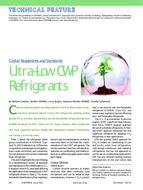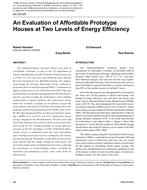Duct Networks (e.g. HVAC) are designed to maintain flow rates at acceptable noise levels. To accurately analyze the acoustics in a duct network in the high frequency region, the following mechanisms need to be modeled: The sound power injected into the network by sound sources (e.g. Fans), the flow noise generated in different parts in the network (e.g. junctions), and the noise reduction across different parts of the network. Traditionally only transmission of sound power with no reflection is considered in standards, e.g., ASHRAE (American Society of Heating, Refrigerating and Air Conditioning Engineers) or VDI (The Association of German Engineers), for analyzing noise in HVAC systems. In this paper, a more general approach is considered based on dividing the duct network into two-port elements where each element can be described by a 2×2 scattering matrix. The state variables are taken as acoustic power flow in the up/downstream directions. Junctions are described by multi-ports depending on the number of elements connected to the junction. A source vector is added to each element and junction to handle sound power injection by fans or other aero-acoustic sources. The advantage of this approach is that the same formalism (based on two-port network theory) can be used to analyze the low frequency range, the flow distribution and the pressure drop across each network path as well as the high frequency range. This two-port power based formulation was earlier validated against a detailed HVAC example in VDI 2081 part2. In this paper, it is validated against a real-life case study and compared with the measurements.
Citation: ASHRAE Papers CD: 2014 ASHRAE Annual Conference, Seattle, WA
Product Details
- Published:
- 2014
- Number of Pages:
- 8
- File Size:
- 1 file , 2.9 MB
- Product Code(s):
- D-SE-14-C070


